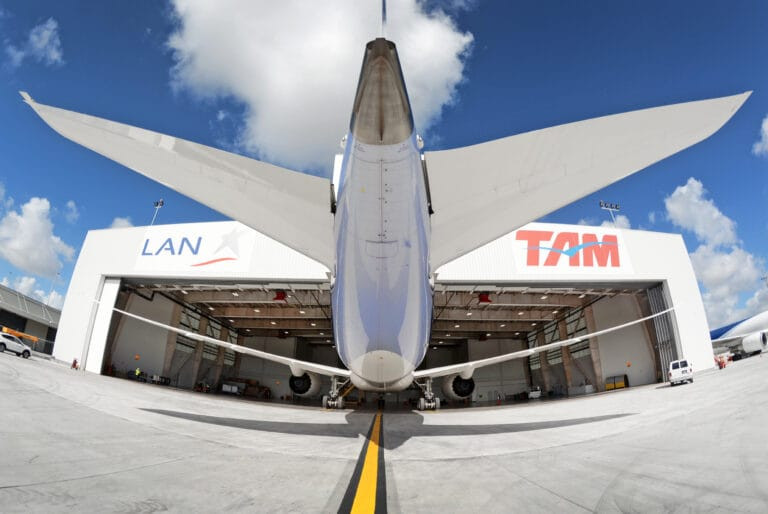While Miami has historically served as a key connector between the Americas, its role in global trade has expanded significantly into a global gateway, linking regions across the world through logistics operations.
Miami’s status as a global cargo hub is also defined by its unique cargo-to-passenger flight ratio. Unlike most major airports, which rely more heavily on belly cargo, MIA stands out for its high proportion of freight carried on dedicated freighter aircraft.
Approximately 80 percent of the cargo moving through Miami is carried on freighter planes. This freighter-dominant model has allowed Miami to better serve global trade needs, making it a key airfreight hub.
The numbers speak for themselves: Miami’s airport is home to over 40 dedicated cargo airlines, and its freighter network spans more than 130 destinations worldwide.
“Cargo has been part of the DNA of this community for many years,” Emir Pineda, Director Marketing and Air Service Development at Miami Dade Aviation Department, stated. “It’s been a long process, but Miami has positioned itself to be much more than just a gateway to Latin America or a link to the US. We’re now a Global Gateway.”
“Covid-19 was a turning point for us. While it was a tragic time, it also showed the strength of our infrastructure. We never stopped flying, and everything was flowing through Miami—feeding the U.S., feeding Latin America, feeding the Caribbean. We were essential.
“We now have freighter operations from Europe, from South America, from Africa, from Asia. So we’re truly connected on a global basis.”
Key focus
Perishables are truly MIA’s strength. Today, 64 percent of all perishables entering the United States and 91 percent of all flowers pass through the hub.
“We targeted the pharma industry to become International Air Transport Association (IATA) certified under the CEIV programme,” Pineda outlined. “Perishables is something that we have handled over the years, working with agencies to making sure that the product moves efficiently and quickly through our airport.”
A critical part of this operation has been developing a robust cool chain infrastructure. On-site, the hub boasts nearly 45,000 sq m of space for temperature-sensitive goods, complemented by over 100,000 sq m off-site.
But beyond these facilities, the airport’s efforts wouldn’t be possible without close collaboration among the airport, federal agencies, freight forwarders, airlines, and other stakeholders.
“We maintain close contact with our colleagues in Bogota, Brazil, Chile, and Peru—major sourcing regions for perishables. To support these efforts, we launched the Perishables Road Show, a long-running initiative in collaboration with Customs and Border Protection and agriculture teams,” Pineda highlighted.
This programme takes MIA to source countries, most recently the Dominican Republic, where they can share best practices for processing perishables, streamline clearance procedures, and address market-specific challenges.
“We go and present the best ways to process their perishables, the clearance and so forth, but also identify some of the challenges that that market may be going through and how to offset those challenges,” Pineda continued.
“We’ve been doing it for 20+ years now – truly a successful show. The collaboration between federal agencies, ourselves here at the airport, the Chambers of Commerce and the exporters from the countries, it all plays into the success story.”
Pushing toward sustainability
In today’s climate-conscious environment, airports are taking on greater responsibility for advancing sustainability across the aviation supply chain. While airlines are making strides with initiatives like sustainable aviation fuel (SAF), airports have the unique opportunity to drive immediate improvements through infrastructure and operational changes.
MIA has implemented a range of projects to reduce its environmental footprint. Recent efforts include transitioning all airport lighting to energy-efficient LEDs and electrifying airside ground handling equipment. Additionally, the airport is in the process of converting its entire bus fleet to electric vehicles. Ground handling partners are also being encouraged to adopt greener equipment, with a gradual shift to electric and low-emission options.
“Miami-Dade County’s mayor is spearheading sustainability efforts, and as a department of the county, we’re proud to contribute to these initiatives,” Pineda stated.
“We believe that in our community, which is highly susceptible to flooding and storms and so forth, the only way we’re going to be successful in the future is to have a sustainable programme that includes the entire community.
“That’s why it’s really at the county level, because it has to be much wider than just our airport.”



